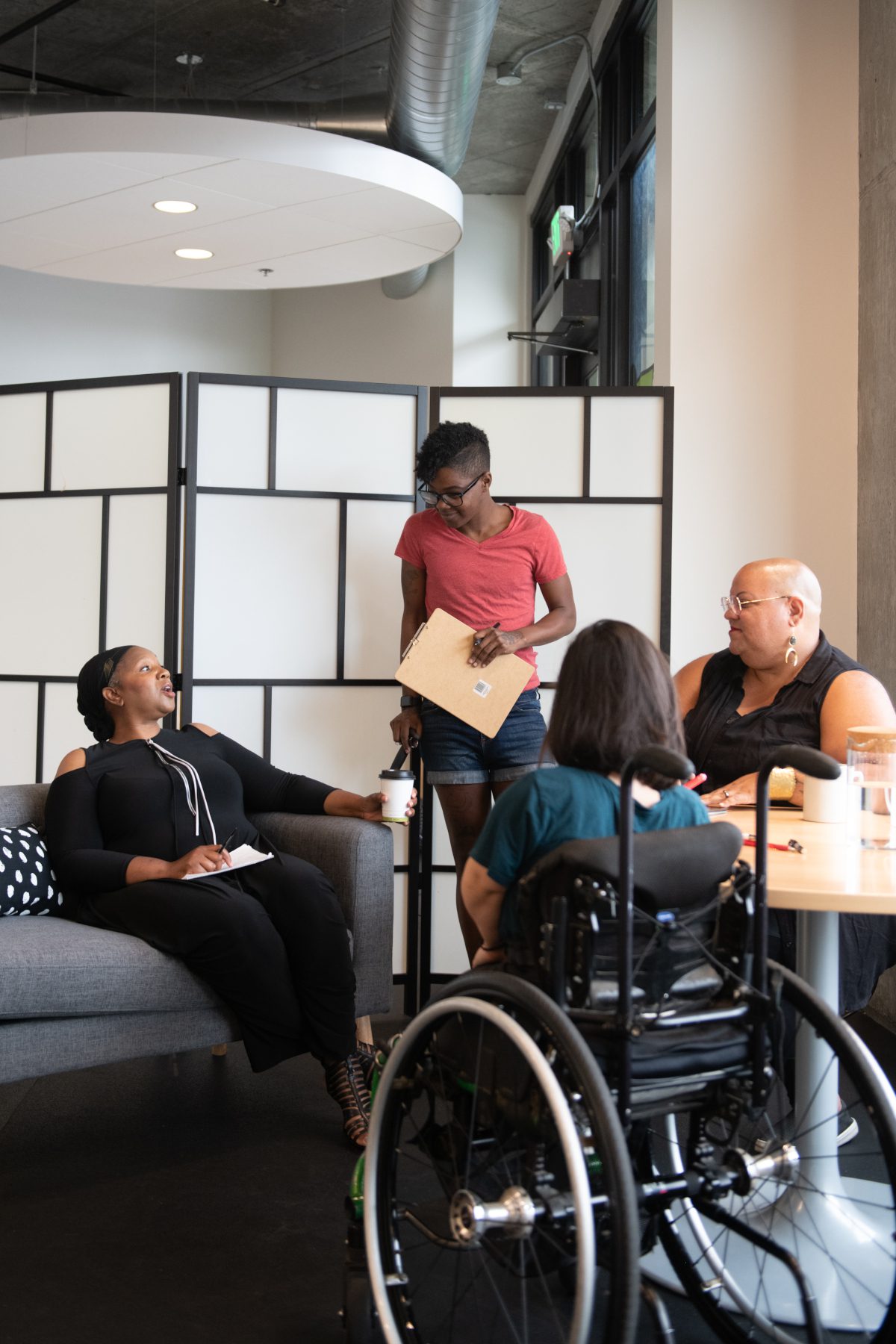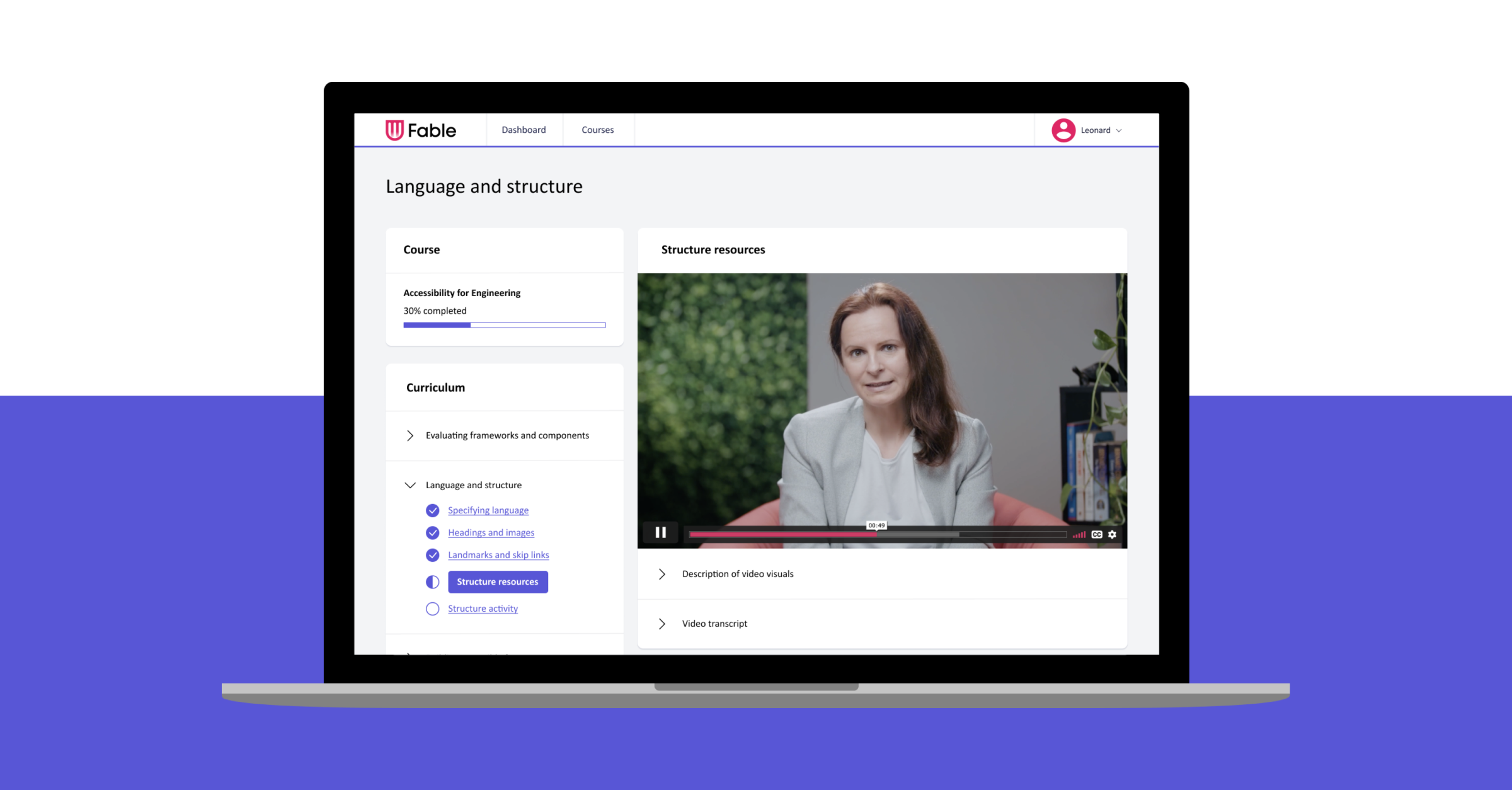Critical considerations when creating your digital accessibility training strategy
Reading time: estimated 5 minutes
Introduction
It has become widely accepted by tech market leaders that creating products that are accessible to people with disabilities is not just a legal and moral requirement, but is now also a requirement to do business across sectors. According to Forrester Research, at least $10 billion dollars of corporate spending will shift towards vendors who have a top-down commitment to accessibility.
However, this shift in focus comes with some challenges. To enable a successful accessibility journey, organizations need to ensure that teams have the knowledge, expertise, and experience that every team member requires to do their part in building more accessible digital products. But in a survey conducted by Teach Access and The Partnership on Employment and Accessible Technology (PEAT), 63 percent of organizations said their current staff does not have the accessibility skills necessary to meet their goals, and 60 percent said it is difficult to find job candidates who have the accessibility skills they need. Bridging this knowledge gap will make organizations better able to inclusively design products that work seamlessly for everyone, and create online experiences that are fully accessible to people with disabilities.

Photo credit: Disabled and Here
Key requirements for successful accessibility training
Clearly, the most important first step for any organization wanting to improve the accessibility of the digital products they create is providing a high quality, engaging, and comprehensive training program to everyone who is responsible for its online experiences. But what are the characteristics of effective accessibility training? In this article, we’ll cover four of the key requirements for digital accessibility training to be successful.
Role-Based
In many organizations, there is a desire to centralize all accessibility knowledge into a single subject matter expert, or a small team of experts. Unfortunately, this rarely results in effective and ongoing accessibility. Instead of integrating accessibility considerations into the product design and development cycle, the subject matter experts become a blocker for other teams, often lack the internal knowledge they require to make effective recommendations, quickly get overworked, and are frequently bypassed entirely.
If accessibility is to be successful, it must be distributed throughout every role and team of the organization. Similar to other critical processes like IT security, accessibility is everyone’s job. This means that accessibility training must be widely distributed, must clearly show the importance of accessibility to the organization, and must equip everyone with the knowledge and tools they need to do their part in creating accessible products. Instead of one size fits all, accessibility training must be customized to the needs of every role.
Practical
Just as every operating system has differing security tools, every programming language requires different development practices, or every design system lends itself to a particular way of working. Accessibility will be different from tool to tool, and organization to organization. But far too often, companies only offer their employees generic, off the shelf accessibility training, not customized to how people at the company actually work. While this type of training can tell employees what they need to do to improve accessibility, it cannot offer them guidance on how to do it at their specific organization.
Unless accessibility training is targeted to the tools, languages, frameworks, and systems that digital teams actually use, they may find themselves just as unable to do effective accessibility work as when they started. This promotes feelings of discouragement and shame, and the belief that accessibility is just another barrier employees need to overcome to get any “real” work done. But when team members are confident that they know the practical actions they need to take to improve product accessibility at their company – and understand the impact doing these things will have – accessibility is no longer a barrier, and instead becomes a satisfying and joyful part of the work they do.
Usability-focused
Accessibility requirements are important tools that organizations can use to help measure and benchmark their accessibility and legal compliance. But if accessibility training is focused exclusively around how to check various boxes on a check list, or how to comply with various legal requirements, it will be ineffective.
Instead, accessibility training should be focused on the knowledge needed for teams to contribute to building excellent experiences for everyone, no matter their disability, age, or other characteristics. Not only does this shift in mindset result in better accessibility overall, it also results in training that is more engaging and meaningful, and helps organizations create a culture of true and lasting accessibility, rather than one of checklists and legality. When employees understand not just the what and the how, but also the why and the who, they are empowered to make meaningful decisions that effectively drive accessibility forward.
User First
It’s likely that most people don’t have direct experience with assistive technology like screen readers or switch systems, and are unfamiliar with the actual lived experience of people with disabilities. Without at least a basic familiarity with these things, it’s difficult for people to come to grips with the changes they need to make in the way they work to improve accessibility. No matter how often they hear from subject matter experts, or how familiar they become with accessibility requirements, the only way for people to gain this understanding is to hear from the voices of people with disabilities directly. That’s why any effective accessibility training program needs to provide not just knowledge from experts, but must also surface the voices and experiences of people with disabilities as part of the training.
If employees can complete a training course without hearing from someone with a disability even once, no matter how committed they may be, digital teams can’t develop the true understanding they need to confidently improve product accessibility.

Final thoughts
In order to create truly accessible products, we need to move beyond having employees spend time reading theory and statistics, and completing multiple choice quizzes about detailed web content accessibility guidelines. Instead, we need to help employees understand the practical things they need to do to build lasting accessibility into every digital product they create. We need to train entire teams, and give every team member the expertise and confidence they need to build accessibility into the foundation of products and services, rather than centralizing accessibility knowledge into a single subject matter expert.
For employees to gain a true understanding of accessibility and inclusion, we must make sure that they hear the voices of people with disabilities, as they engage with the products and services their organization creates. These challenges are why we created Fable Upskill. It’s time for all of us to do better.
Fable Upskill provides custom, role-based training that directly surfaces the voices of people with disabilities, and gives employees not just the basic “what” of accessibility but shows them “how” to make it happen, with the tools, systems, and frameworks they already use. If you’re excited to get started on your accessibility journey, the most important first step is to make sure your employees know what their accessibility responsibilities are, why they matter, and how to achieve them. Fable Upskill can help!
